Although Leningrad has long since reverted to its pre-Revolutionary name of St. Petersburg (quite appropriately, in my view), I’m still calling it Leningrad in this post, just to underline that this trip took place in the Soviet Union. Our 1964 University of Oklahoma tour group took an overnight train from Moscow to Leningrad and stayed at the Sputnik Hotel Druzhba (“Friendship”). It was comparable in appearance and amenities to our lodging in Moscow – i.e. drab and mediocre, but quite adequate, especially in view of the reasonable cost of the trip.
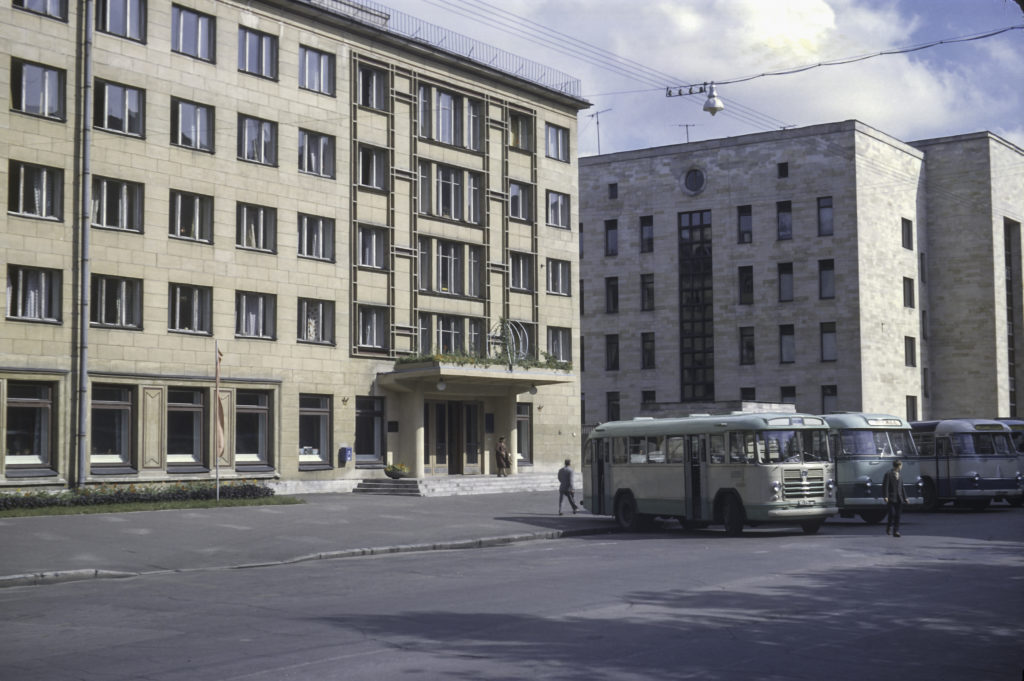
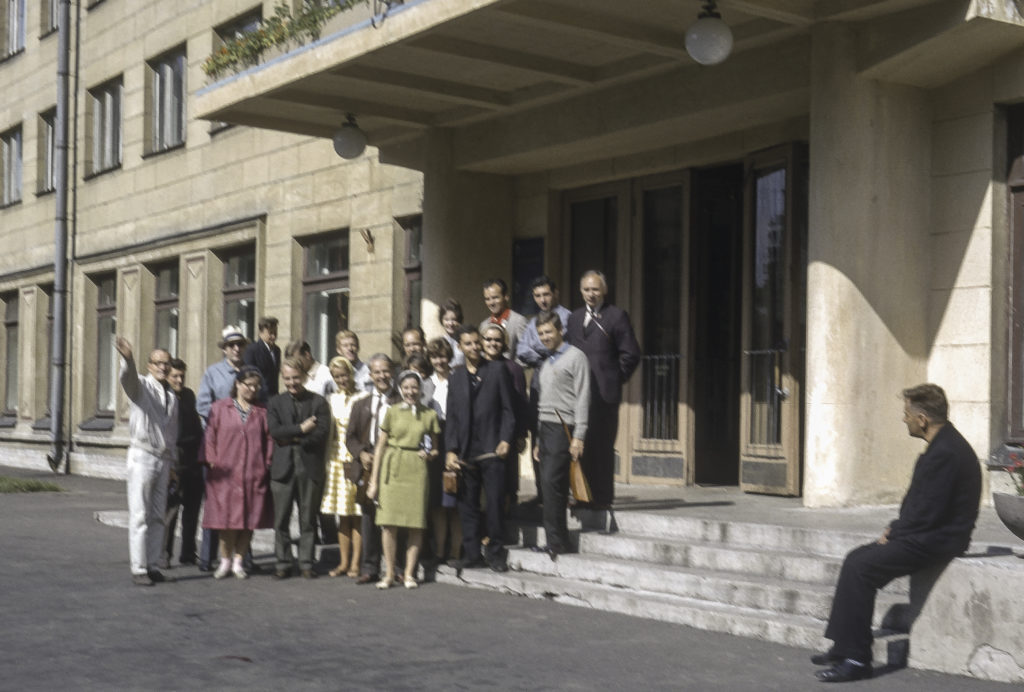
We posed in front of the Hotel Druzhba for a group picture, and I shot my own picture of our tour group also. It’s now been fifty-six years since I made this trip, and I can’t remember even the first names of all my fellow-travelers, and only a few of the last names.
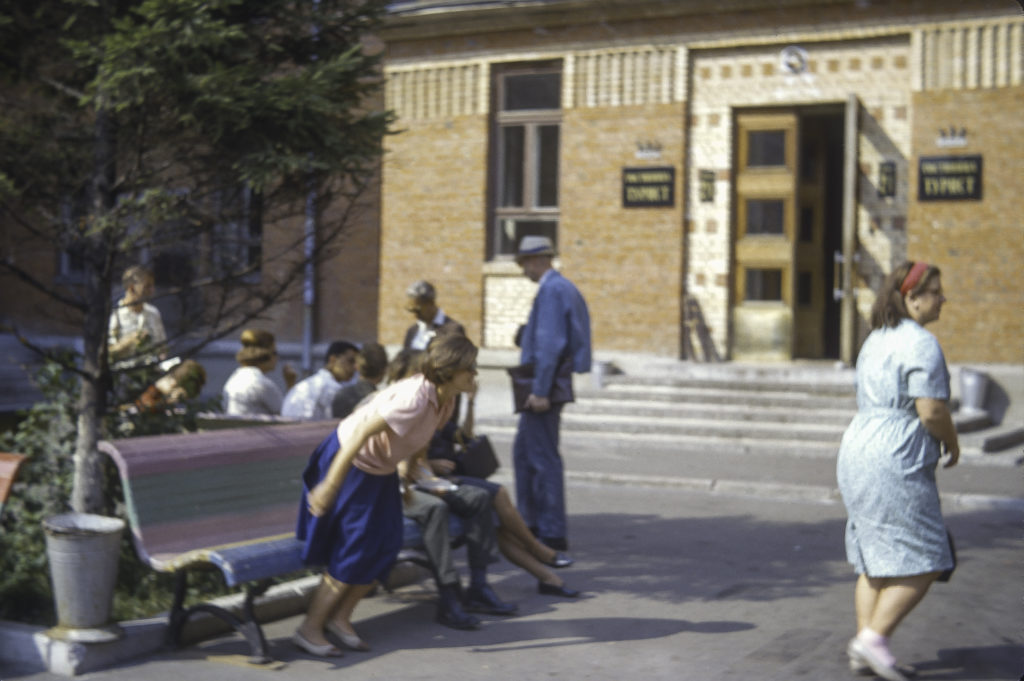
But I remember our Soviet guides vividly. They remained with us all through our trip in the Soviet Union. They never told us their family names.
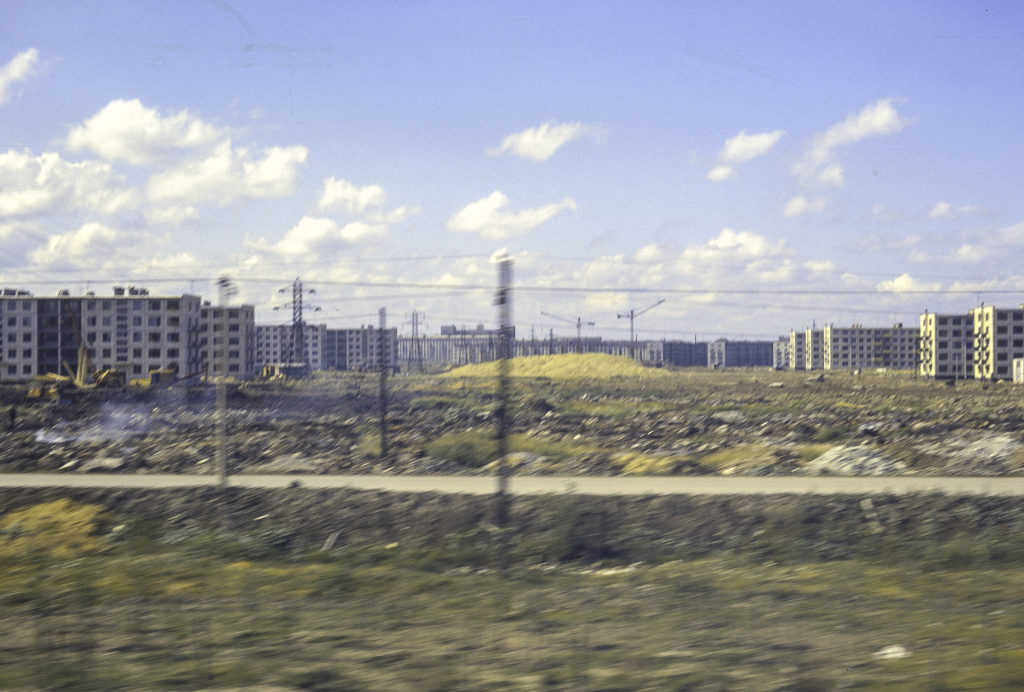
On our way to our excursion destinations, we caught glimpses of residential construction sites. These of course were typical Soviet apartment block buildings – they were going up by the hundreds. It portended a considerable rise in living standards for Russians, who had been living in cramped communal apartments for years.
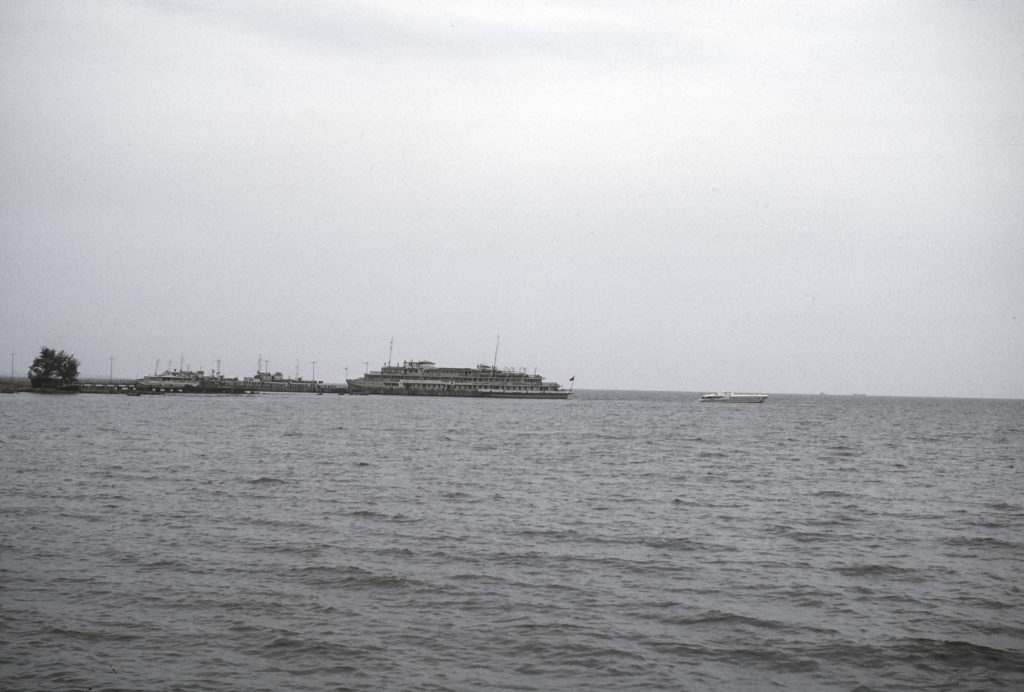
Our first excursion in Leningrad was to the palace of Peterhof, then called Petrodvorets to avoid using the original Germanic name. (The name “Peterhof” was restored in 1997.) Peter the Great built the palace in imitation of Versailles, and it has often been called the Russian Versailles. Peterhof is some distance from central St. Petersburg and is best reached by water. We went there by hydrofoil. This was my first trip on a hydrofoil and I was surprised to find out how far in advance the Soviet Union was of the USA in the use of this technology, since I had never seen any hydrofoils in use in the United States.
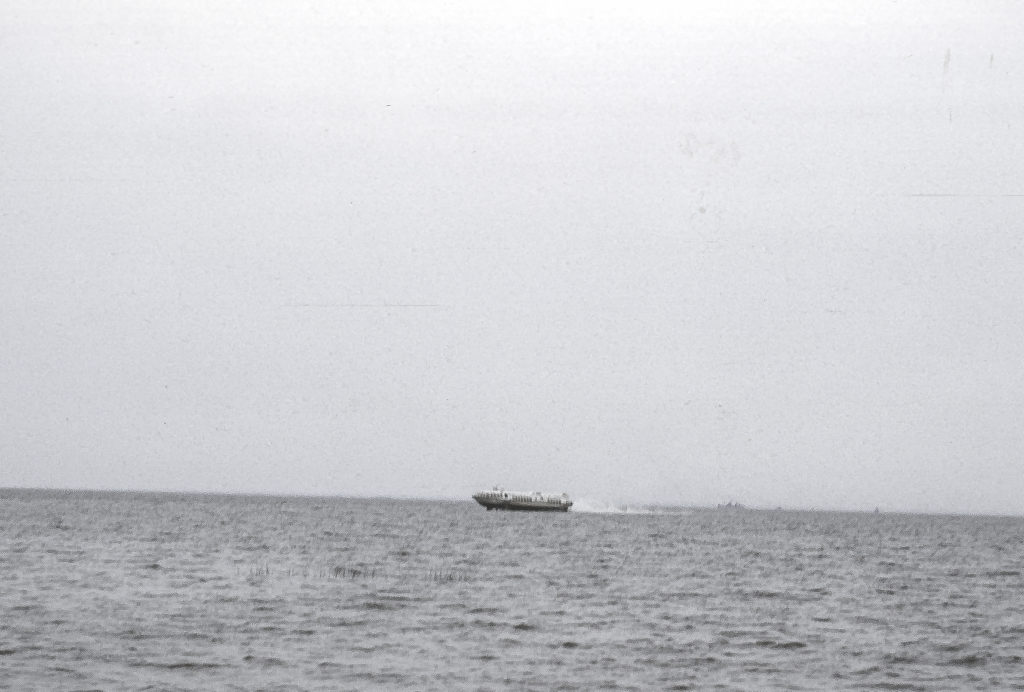
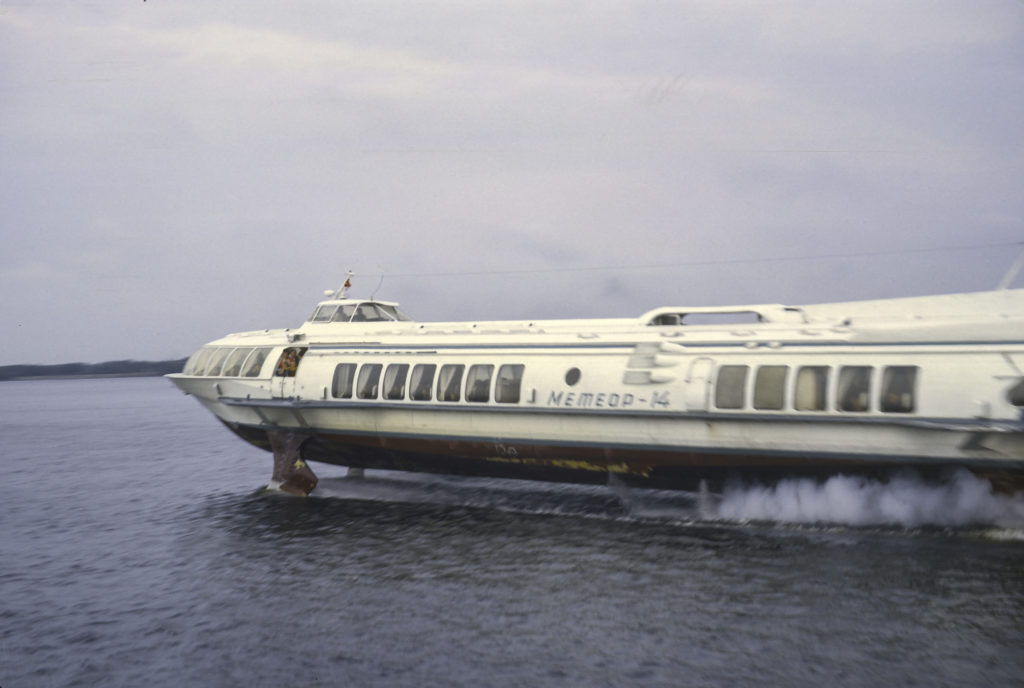
Peterhof, like most of the Russian imperial palaces in the St. Petersburg area, was overrun by Hitler’s armies in 1941 and many of its artistic treasures were looted or destroyed. In particular, the Grand Palace was blown up and burnt down. But rebuilding began almost immediately when the war was over, and by 1964, when I visited, most of the buildings and fountains had been restored.
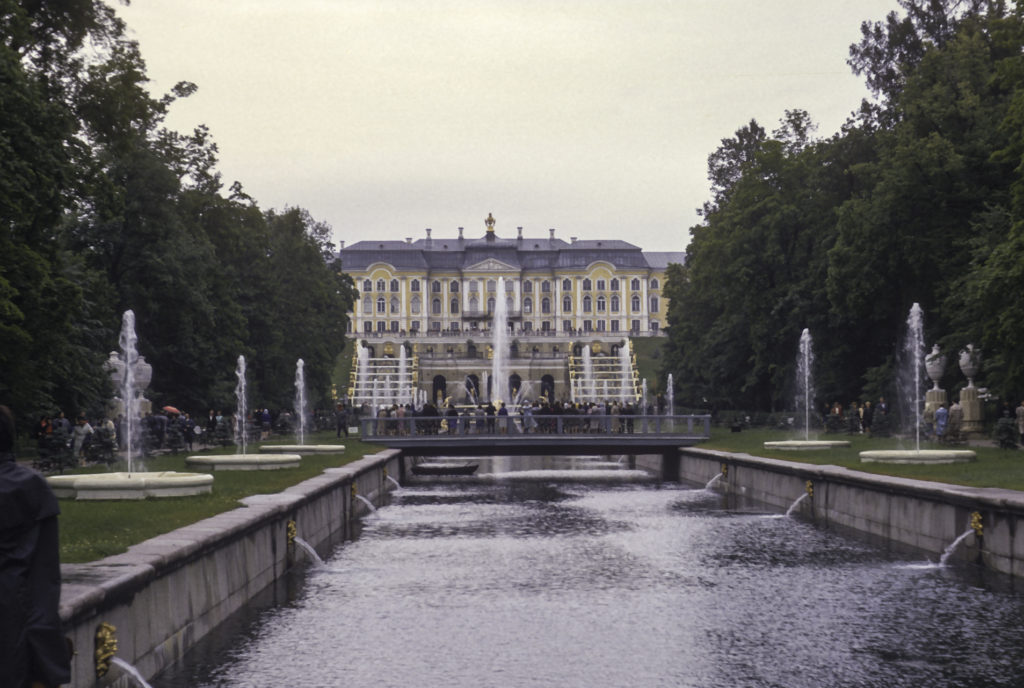
The Grand Palace of Peterhof sits atop a 52-feet high bluff. Down the face of the bluff runs the Grand Cascade, at the center of which is an artificial grotto, with 64 fountains below and on both sides of it. The waters flow into a semicircular pool, which is the terminus of the Sea Channel, also lined with fountains, as seen in the picture above. The fountains at Peterhof all work without the aid of pumps; water is supplied from springs, collected in reservoirs in the Upper Gardens atop the bluff, and pressure is maintained simply by the difference in levels. Unfortunately, although there are many splendid fountains at Peterhof, some of them quite ingenious such as the mushroom fountain which sprays water on you when you stand underneath it, and the fruit bowl which squirts you in the face, the pictures I took of them have not survived.
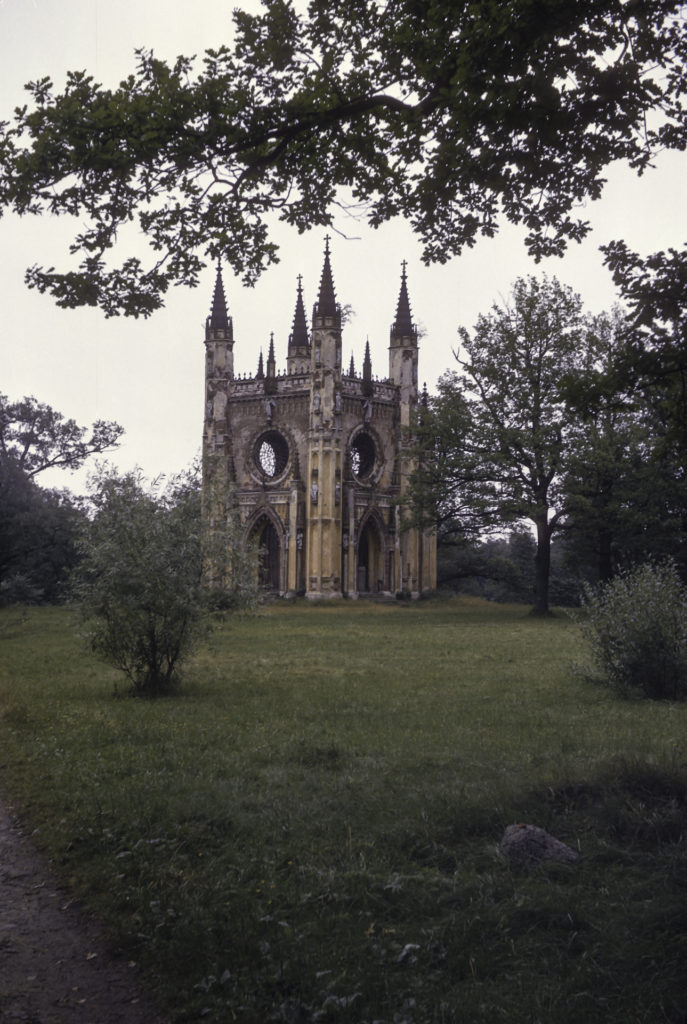
The St. Alexander Nevsky Chapel at Peterhof is a blend of Gothic and Orthodox elements. There is also a larger Imperial Chapel, where the children of the Tsar were traditionally baptized, and which was attached to the Grand Palace; unlike the rest of the palace, it was not completely rebuilt after World War II – in particular only one dome out of the previous five was restored, and the chapel became a post office. But from what I can gather, the Imperial Chapel was eventually restored to its prewar state after the 1991 revolution and reconsecrated in 2011.
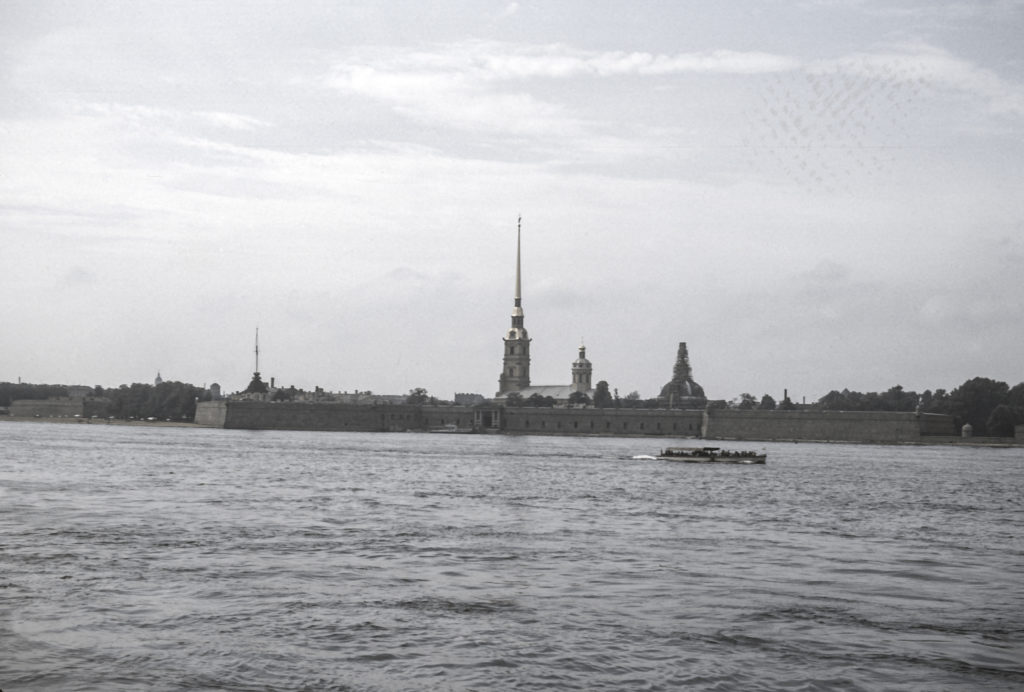
Back in Leningrad, we visited the Peter-Paul Fortress, established when St. Petersburg was founded in 1703. The structure with the golden spire projecting high above the fortress is actually the Cathedral of Sts. Peter and Paul, which is enclosed by the fortress. The cathedral was begun in 1712 and completed in 1733 and houses the remains of all the Russian rulers from Peter the Great to Nicholas II, except Peter II and Ivan VI, the remains of Nicholas II and his family having been laid to rest there in 1998.
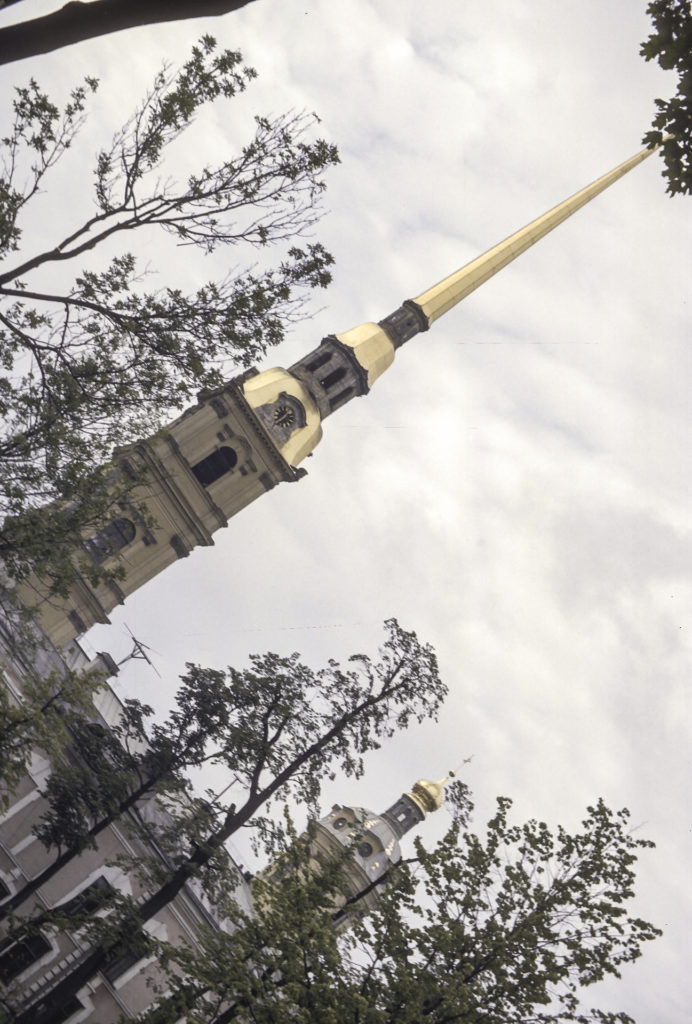
During the 18th and 19th centuries, the Peter-Paul Fortress served as headquarters for the city garrison and also as a prison, mainly for persons of high rank and important political prisoners. One of the first was Alexei Petrovich, son of Peter the Great, who was disinherited by his father and died after interrogation under torture. Later, in the 19th century, such persons as the Decembrist revolutionaries, Fyodor Dostoevsky, Peter Kropotkin (who became the first person to escape), Mikhail Bakunin, and Leon Trotsky were imprisoned there also. The Bolsheviks – including our guides – portrayed the Peter-Paul fortress as a hell on earth, a place where prisoners were kept in filthy, overcrowded dungeons, starved and tortured; actually conditions there were mild – for example, prisoners were allowed tobacco, writing paper and books – and compared to Soviet prisons and the gulag, it was a paradise.
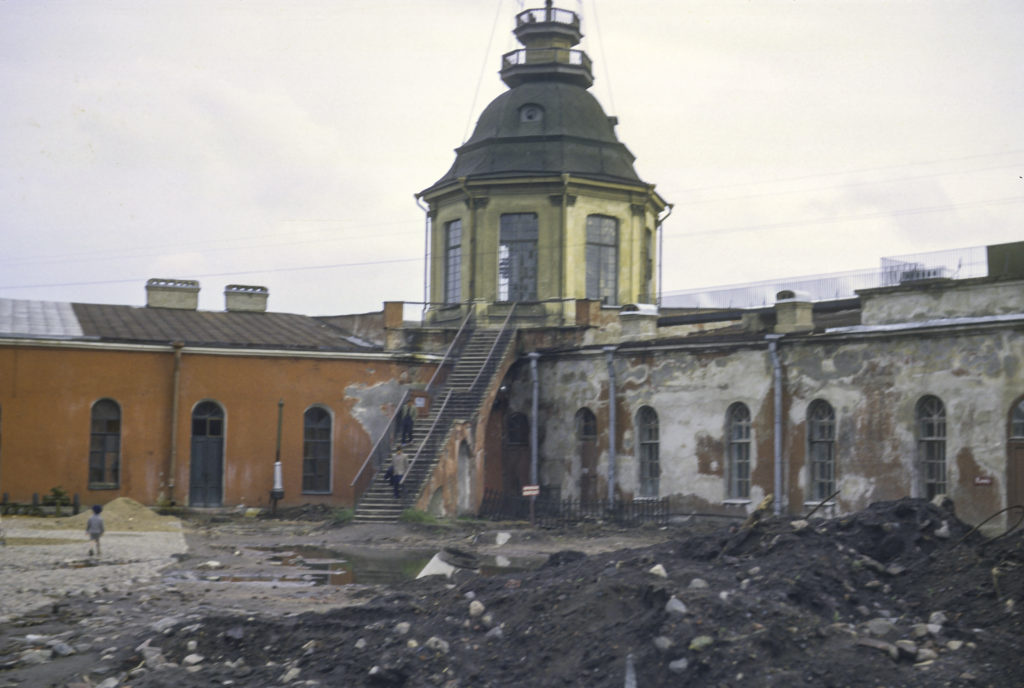
The Bolsheviks initially also used the Peter-Paul Fortress as a prison, and from 1918 to 1921 conducted over 100 executions there. In 1924 it was converted into a museum. During World War II, the Peter-Paul Fortress suffered considerable damage from bombing, and restoration work was still going on when I visited in 1964.
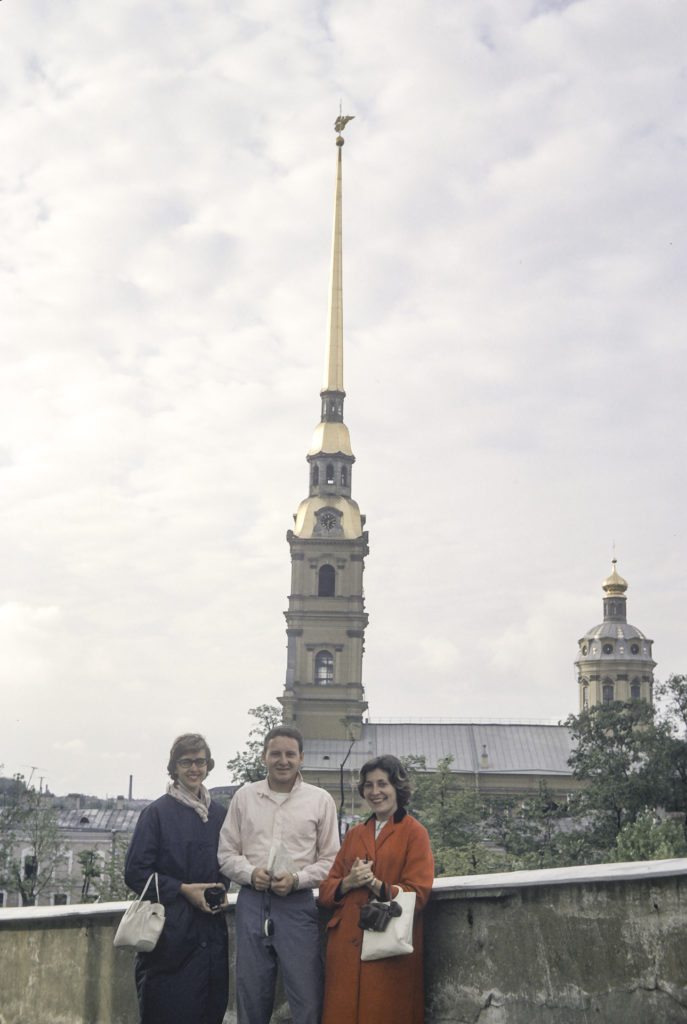
At the top of the list of attractions in St. Petersburg/Leningrad is the former Winter Palace, the official residence of the Russian emperors from 1732 to 1917. Now known as the Hermitage, it is one of the world’s greatest museums. We were all anxious to see it, but our guides had other priorities, of which the first and foremost was to impress upon us the terrible suffering that the people of Russia had endured in the war against Nazi Germany, at that time only two decades past. For this reason, before they would let us tour the Hermitage they insisted that we visit the Piskaryovskoe Memorial Cemetery on the outskirts of the city, where over 400,000 of the more than 900,000 victims of the Siege of Leningrad are buried, along with 50,000 of the Red Army soldiers who defended the city.
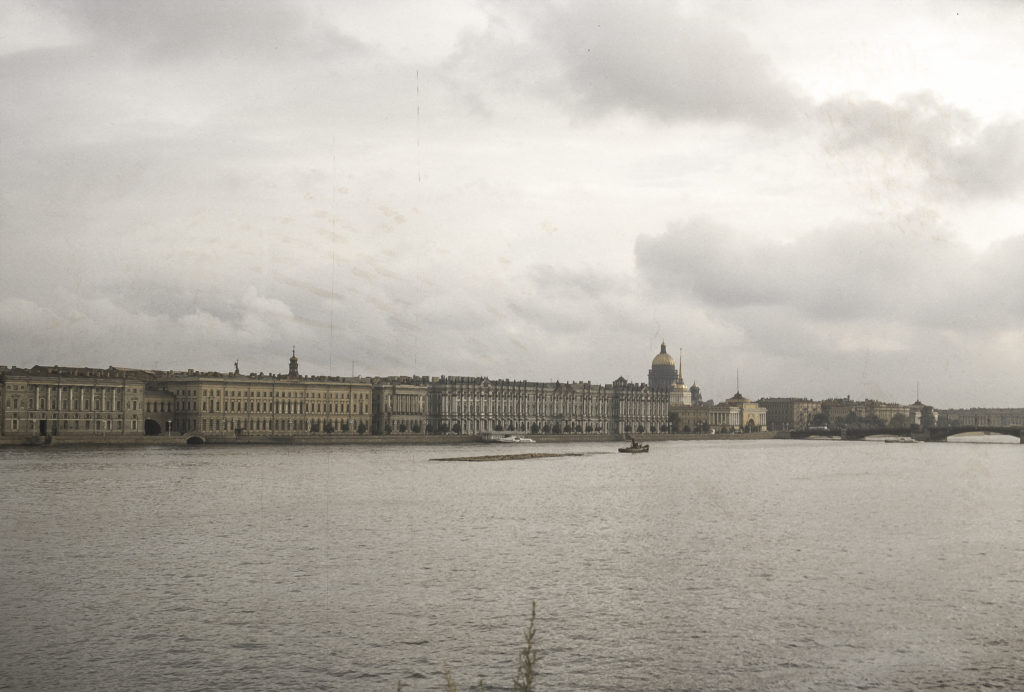
Let me say unequivocally that I fully understood and supported our guides on this point. Few Americans understand what the people of the Soviet Union underwent in World War II. The German onslaught that began in 1941 was the greatest invasion in history. The Red Army, its officer corps drastically weakened by the Stalinist purges of 1937, faced a surprise attack by an enemy which had overrun every opponent it had faced on the European continent in a matter of days – an enemy, moreover, which was intent not just upon conquest but enslavement and extermination, and shrank from no extremes of horror in the pursuit of its aims. Survival, and ultimate victory, had been obtained only at the cost of immense sacrifices and privations inconceivable to most Westerners. The siege of Leningrad, which lasted from September 8, 1941 to January 27, 1944, is a case in point. Hitler sent an entire army group, Army Group Nord, against Leningrad, with orders to seal off the city, let the entire population starve to death, then raze it to the ground. No surrender negotiations were to be entertained.
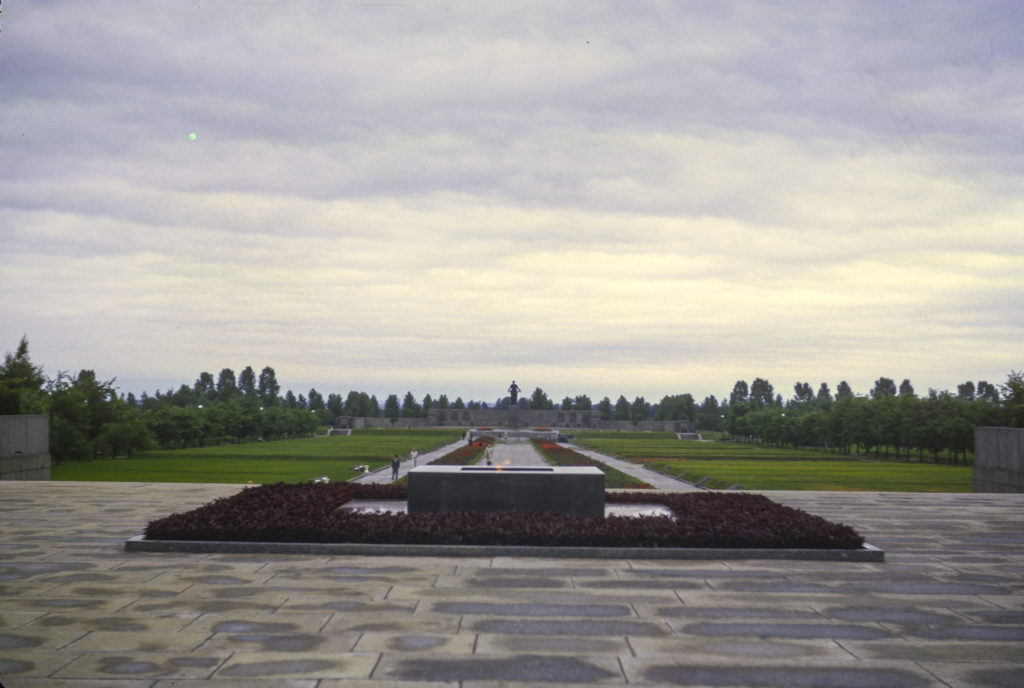
Almost half the population of Leningrad was evacuated before the siege ring closed round the city, but many of the evacuees themselves died of the hardships endured then and afterwards. During the siege itself, a million and a half soldiers and civilians perished from all causes. Many civilians were killed by air and artillery bombardments, but most died of starvation.
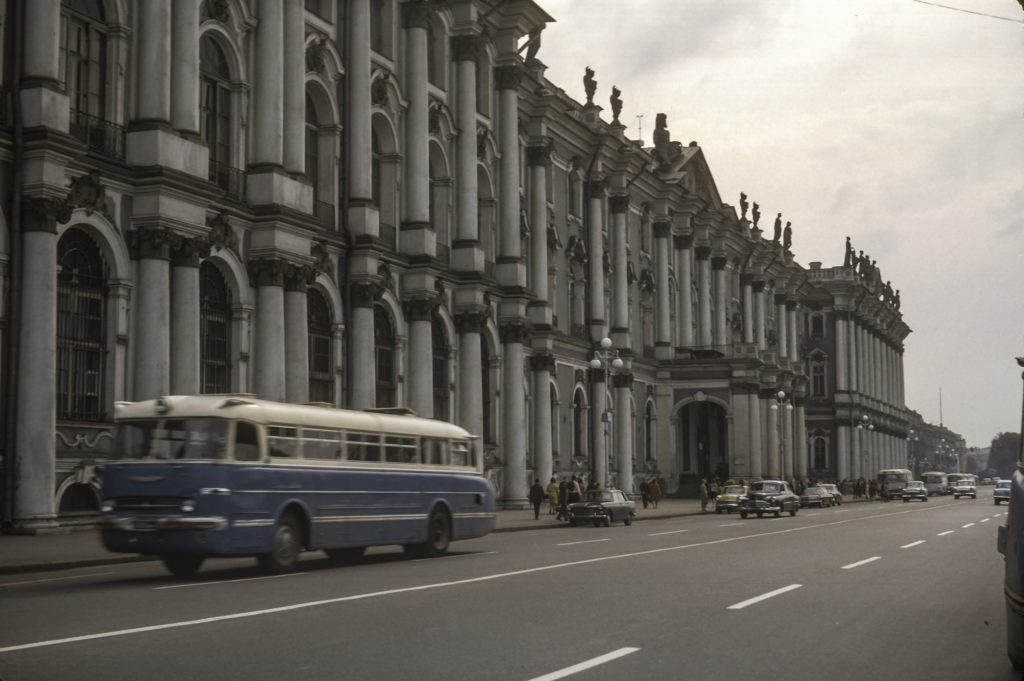
So I had no objection to going to the cemetery, nor I think did anyone else in our tour group. Of course all of us, as students of Russian language and history, were already well aware of the events of World War II, and we didn’t really need to have the horrors of the Nazi invasion further impressed upon us; but that wasn’t a major issue. It was the timing of the visit that proved objectionable. Because of inept scheduling, the cemetery visit took longer than planned; and by the time we arrived at the Hermitage, we had about half an hour left before closing to see it all. In the upshot, I didn’t get a good chance to tour the museum until 1972.
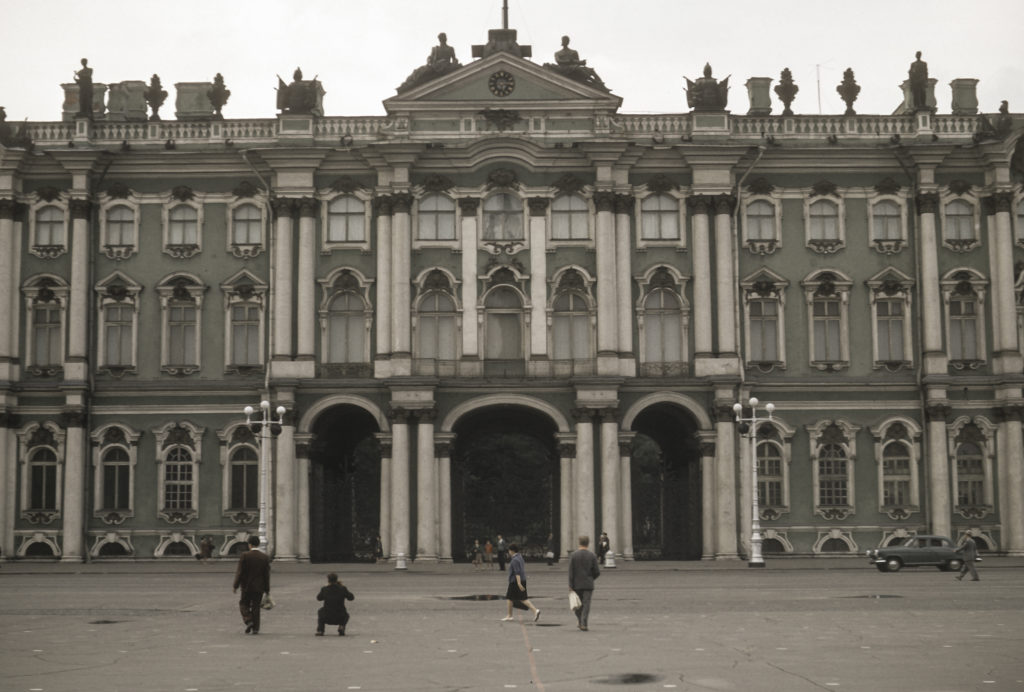
We were also given a tour of a vodka distillery; unfortunately, I wasn’t able to take any pictures there since I didn’t have a flash attachment for my camera. At the conclusion of the tour we were taken to a conference room with a very large table covered by a green felt tablecloth (these were ubiquitous in any kind of conference room in the Soviet Union). For each person in our group there was a place setting with several plates, silverware and five crystal glasses, one for each type of vodka we were to sample. The table was also copiously laden with zakuski – hors d’oeuvres – and many, many bottles of vodka. We understood, of course, that it would be considered rude and very gauche to excuse oneself from sampling the vodka. In the group were several underage college students and at least one teetotaler, a Mormon who was obliged by his religion to abstain from alcohol. I believe he coped with the situation by pretending to sip, then pouring the contents of his glass into a potted plant when he thought none of the staff was looking his way. But not everyone was able to get away with that, and some of the coeds, who weren’t used to imbibing the amounts of alcohol involved, came off rather badly, and practically had to be carried back to the bus.
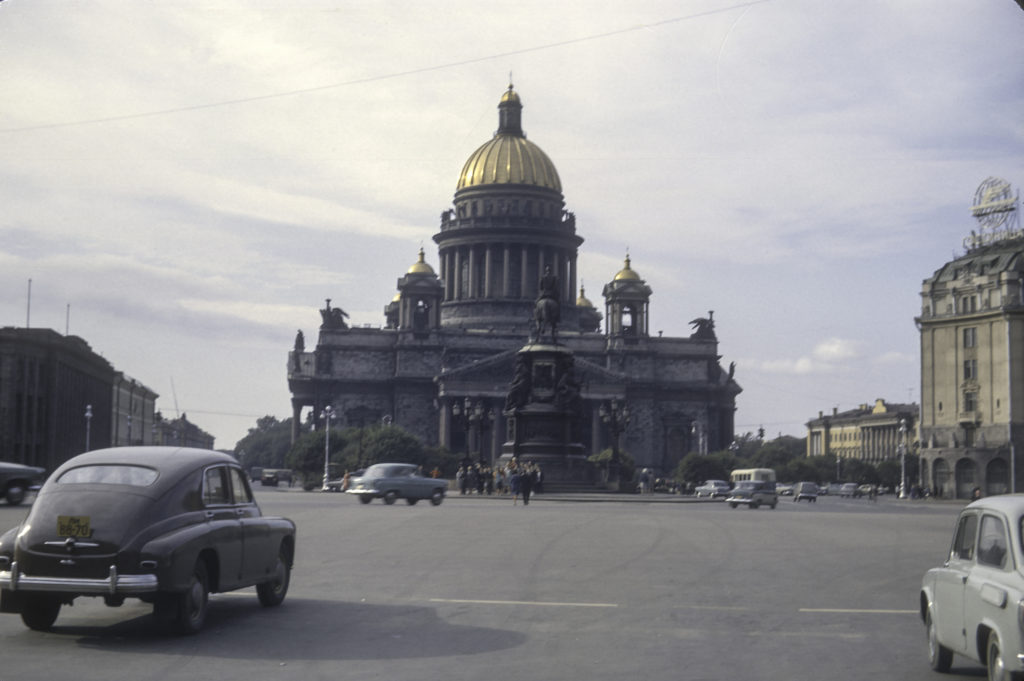
Emperor Alexander I initiated the construction of St. Isaac’s in 1818, but did not live to see its completion, since he died in 1825 and the church was not completed until 1858, in the reign of Alexander II. Alexander I did ensure, however, that St. Isaac’s was built in his favorite Empire style, which was a late phase of the Neoclassical style popular in Western Europe, ascendant especially in France. (“Empire” in this case refers to the French empire of Napoleon, not the Russian Empire.) An equestrian statue of Nicholas I stands in front of the cathedral, though it is difficult to make out in the picture above. In the Soviet period St. Isaac’s was turned into a museum, which it still remains, although Russian Orthodox services are held on holidays and other occasions.
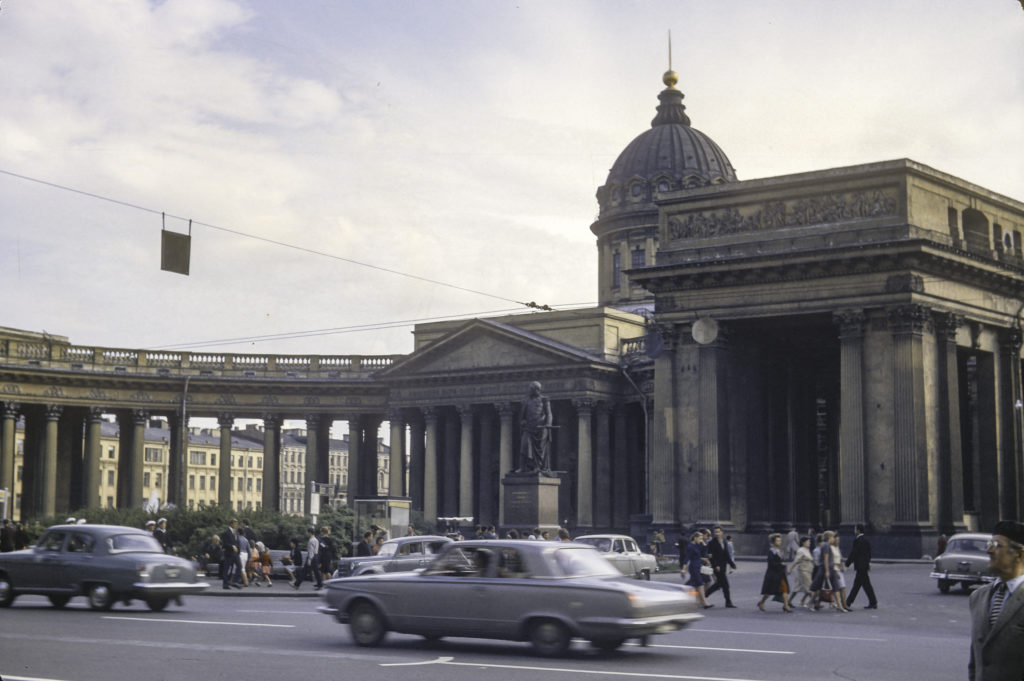
The Kazan Cathedral, or Cathedral of Our Lady of Kazan, was begun in 1801 and completed in 1811, just in time for the War of 1812. The architect modeled it on St. Peter’s Basilica in Rome, over the strenuous objections of the Russian Orthodox Church, but these went unheeded by Emperor Alexander I, who favored the Neoclassical/Empire style of architecture in fashion during the Napoleonic era. The Soviets converted it into a Museum of the History of Religion and Atheism, and that was what it was when I visited it in 1964. The anti-religious propaganda was jejune and pedestrian, and probably would have convinced few believers to renounce their faith. Following the revolution of 1991, the Kazan Cathedral was returned to the Russian Orthodox Church and is now the seat of the metropolitan of St. Petersburg.
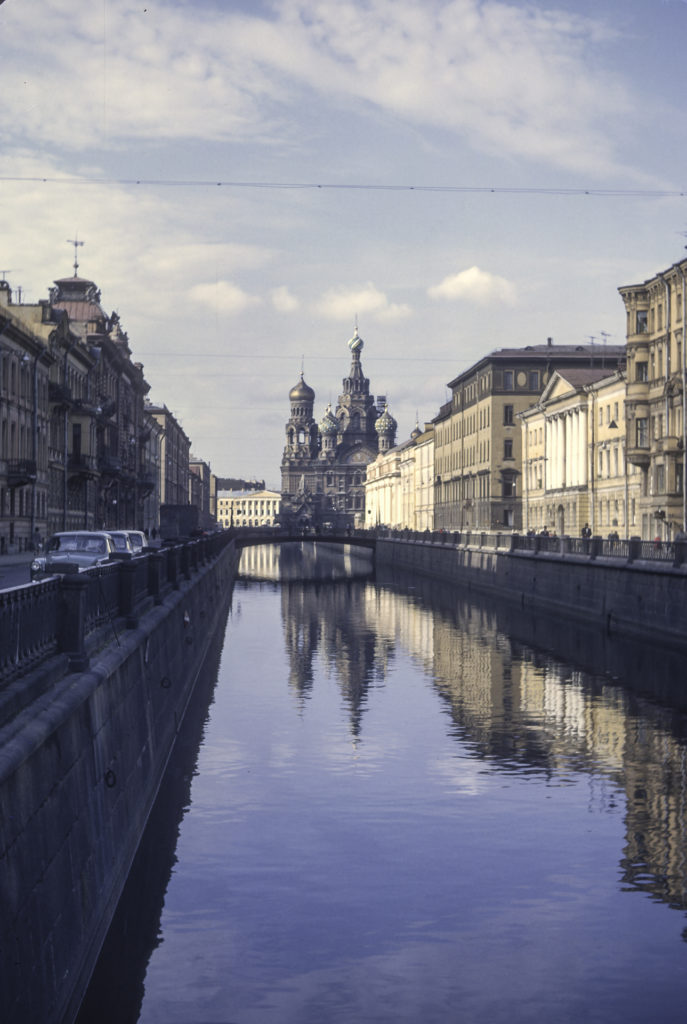
March 13, 1881, was one of those days when history seems to hold its breath. On that day, in St. Petersburg, capital of the Russian Empire, the terrorist society Narodaya Volya – the “People’s Will” – after several unsuccessful attempts, finally succeeded in assassinating the Emperor Alexander II, a few hours after he had signed a document which might have (and in the Tsar’s own opinion, would have) set Russia on a path to transformation from an autocracy into a constitutional monarchy. Alexander II’s son and successor, Alexander III, was of a much different mind; he immediately reversed course and embarked upon a program of iron-fisted repression. Another outcome of the assassination was the building of the Church of the Savior on Spilled Blood, on the exact spot on Griboedov Canal where the assassination took place. Intended as a memorial to the slain Tsar, the church was begun in 1883 and funded by donations from the Imperial family. Unlike the Baroque and Neoclassical structures which had dominated St. Petersburg ever since its founding by Peter the Great in 1703, the Church on the Blood was an explicit revival of the church architecture of pre-Petrine Muscovy, as embodied in St. Basil’s Cathedral in Moscow. It was finally completed in 1908, but never functioned as a public place of worship, only for conducting memorial services for Alexander II, as intended by the Imperial family. It suffered badly from looting and vandalism during the 1917 Revolution, and was closed afterward. During the Soviet period it was used for various secular purposes, such as a morgue for victims of the siege of Leningrad in World War II, and a storehouse after the war. It was not open to the public at the time I visited in 1964, but restoration began in 1970, and the church was reopened as a museum of mosaics in 1997.